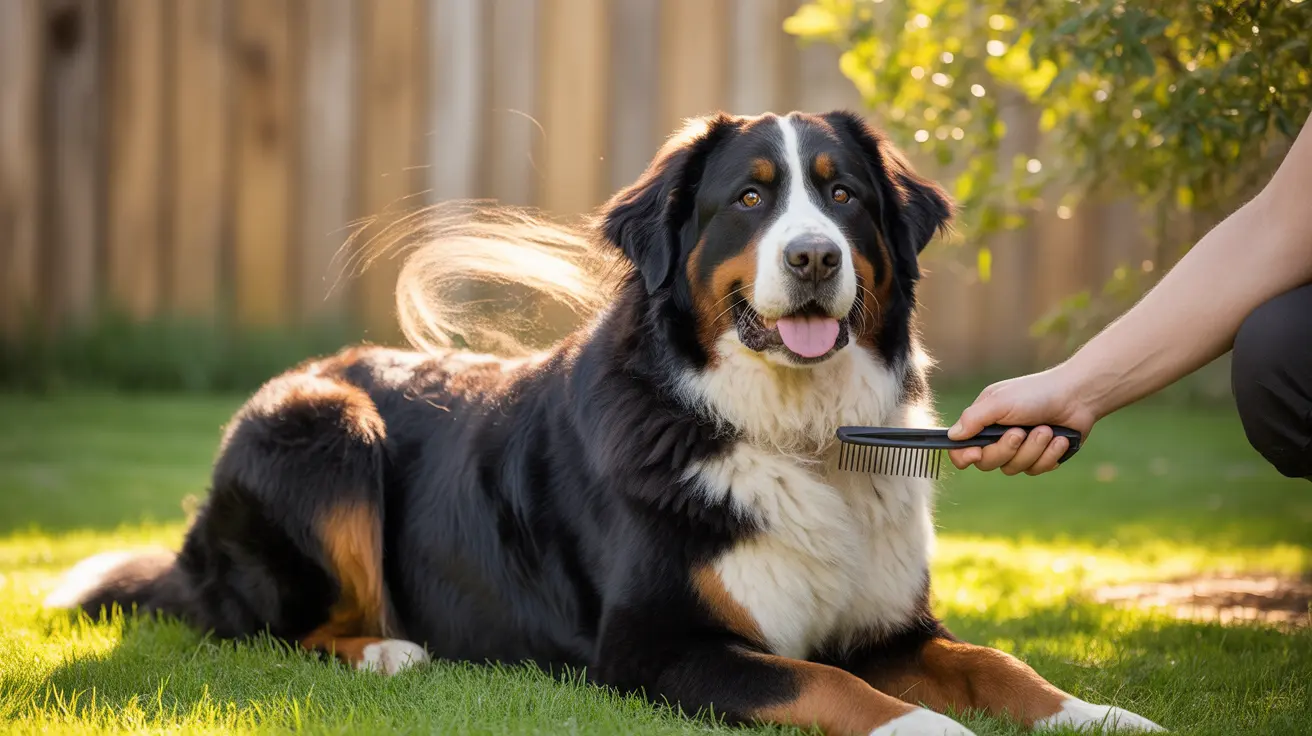Bernese Mountain Dogs are magnificent companions known for their striking tri-colored coats, but they're also notorious shedders. If you're considering bringing one of these gentle giants into your home or already share your life with a Berner, understanding their shedding patterns and management requirements is crucial for maintaining both your dog's coat health and your sanity.
Their distinctive double coat, while beautiful, requires dedicated maintenance and creates significant year-round shedding. Let's explore everything you need to know about Bernese Mountain Dog shedding, from seasonal patterns to effective management strategies.
Understanding the Bernese Mountain Dog's Double Coat
Bernese Mountain Dogs possess a thick double coat that evolved to protect them in the harsh Swiss Alps. The outer coat consists of long, straight guard hairs that repel moisture and dirt, while the dense undercoat provides insulation against both cold and heat.
This specialized coat structure means that Berners shed continuously throughout the year, with two major seasonal shedding periods when they "blow" their coats. During these times, the amount of loose fur can be truly remarkable.
Seasonal Shedding Patterns
While Bernese Mountain Dogs shed year-round, they experience two distinct heavy shedding seasons annually, typically in spring and fall. During spring, they shed their heavy winter coat to prepare for warmer weather. In fall, they lose their lighter summer coat to make way for their thicker winter fur.
These seasonal shedding periods can last several weeks, during which the amount of loose fur increases dramatically. Many owners affectionately refer to this phenomenon as "Berner snow" due to the clouds of fur that can float through their homes.
Essential Grooming Tools and Techniques
Successfully managing a Bernese Mountain Dog's shedding requires the right tools and consistent grooming routine. Essential tools include:
- An undercoat rake for removing loose undercoat
- A slicker brush for surface brushing
- A metal comb for detecting and removing tangles
- A high-quality de-shedding tool for use during heavy shedding seasons
Regular brushing sessions should last 20-30 minutes and be performed at least 2-3 times per week, increasing to daily during shedding seasons. This not only helps control loose fur but also prevents painful matting and promotes healthy skin circulation.
Health Factors Affecting Shedding
Several health-related factors can influence how much your Bernese Mountain Dog sheds. Poor nutrition, stress, hormonal imbalances, and underlying health conditions can all lead to excessive shedding. Ensuring your dog receives:
- A balanced, high-quality diet rich in omega-3 fatty acids
- Regular veterinary check-ups
- Proper hydration
- Adequate exercise and mental stimulation
These factors can help maintain healthy shedding patterns and overall coat condition.
Managing Shed Hair in Your Home
Living with a Bernese Mountain Dog means adapting your cleaning routine. Consider implementing these strategies:
- Invest in a powerful vacuum designed for pet hair
- Use washable slipcovers on furniture
- Place washable rugs in high-traffic areas
- Keep grooming supplies in multiple locations for quick touch-ups
- Consider air purifiers with HEPA filters to capture airborne fur
Frequently Asked Questions
How often should I brush my Bernese Mountain Dog to control shedding effectively?
Brush your Bernese Mountain Dog at least 2-3 times per week during regular periods, increasing to daily brushing during seasonal shedding periods (spring and fall). Each session should last 20-30 minutes to thoroughly remove loose fur and prevent matting.
Why does my Bernese Mountain Dog shed more during spring and fall?
Increased shedding during spring and fall is a natural process called "blowing coat," where dogs shed their seasonal coat to prepare for temperature changes. Spring shedding removes the heavy winter coat, while fall shedding prepares for new winter growth.
What grooming tools are best for managing the thick double coat of a Bernese Mountain Dog?
The essential tools include an undercoat rake, slicker brush, metal comb, and de-shedding tool. These different tools work together to effectively remove loose fur from both the outer coat and undercoat while preventing matting.
Can diet and health issues affect the amount my Bernese Mountain Dog sheds?
Yes, diet and health significantly impact shedding. Poor nutrition, stress, hormonal imbalances, and underlying health conditions can all cause excessive shedding. A balanced diet rich in omega-3 fatty acids and regular vet check-ups are essential for maintaining healthy coat condition.
Is it safe to trim or shave my Bernese Mountain Dog's coat to reduce shedding?
No, it's not recommended to shave or significantly trim a Bernese Mountain Dog's coat. Their double coat serves as natural insulation and protection from both cold and heat. Shaving can disrupt this natural protection and may lead to improper coat regrowth or skin problems.






